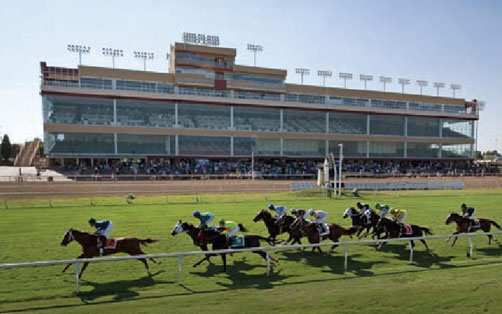
Oklahoma is home to one of the largest casino industries in the United States, with well over 100 tribal casinos located throughout the state. These casinos play a significant role in the state’s economy, supporting nearly 76,000 jobs and generating $1.69 billion in tax revenue and tribal revenue share payments to all levels of government, per the American Gaming Association’s 2022 State of the States report.
In this article, we will examine the current state of the casino industry in Oklahoma, the long history of Oklahoma gaming compacts and the future outlook for tribal gaming in Oklahoma and beyond.
Market Overview
The Oklahoma casino industry is a major contributor to the state’s economy, providing significant amounts of revenue, jobs and entertainment to the citizens of the state. The Sooner State is home to 142 casinos and gaming enterprises, making it one of the largest gaming markets in the United States. The industry started in the early 1990s when the state government passed a law allowing for the development of gaming facilities. This led to a surge in the number of casinos, which now range from large, resort-style casinos to smaller, local gaming centers.
The National Indian Gaming Commission (NIGC) reports annual revenues by region. Oklahoma is split between two separate regions—Oklahoma City and Tulsa—as seen in the map at right. Unfortunately, these two regions encompass three different states, bleeding north into Kansas and south into Texas.
By using deductive reasoning, we estimate that of the $6.2 billion of revenue generated by these two regions, approximately $5.5 billion was generated by Oklahoma in FY 2021. This is roughly a 45 percent increase over FY 2020, which is to be expected given pandemic-related impacts. Interestingly, this makes Oklahoma one of the top five largest gaming markets in the country, including both commercial and tribal states.
According to the FY 2022 annual report of the Oklahoma Gaming Compliance Unit (OGCU), “the State of Oklahoma collected over $191.5 million in tribal gaming exclusivity in fiscal year 2022… based on over $3.19 billion in Class III electronic games and non-house-banked card games.”
This represents an increase over the previous year of 18 percent, outpacing the commercial market growth rate of 14 percent. The NIGC report represents total gross gaming revenue (GGR), while the OGCU only identifies the revenues on which exclusivity fees are paid—Class III revenue. Therefore, the difference between the NIGC figure and the OGCU figure is the Class II revenue generated by the state.
Oklahoma is a unique gaming market with regards to the significant amount of Class II gaming machines compared to Class III. Historically, Class II machines have been utilized to backfill markets that have surpassed their allotment of Class III machines, or to offer a different style of machine to the gaming patron. In Oklahoma, tribes have used Class II machines to help reduce exclusivity fees paid to the state while maintaining a quality gaming product, a model that has not been as successful in other gaming markets around the country.
Like the rest of the country, Covid-19 impacted the Oklahoma gaming market to the tune of 16 percent. While not the largest impact seen across U.S. gaming markets, it was significant enough to create job loss and decrease critical funding for non-gaming businesses as well as services offered to tribal members. Larger Oklahoma tribes like the Cherokee, Choctaw and Chickasaw Nations have been at the forefront of recovery and growth, and continue to invest heavily in their casino operations, build new facilities and expand existing ones.
These tribes have been successful in attracting new customers, increasing their market share and growing their revenue. The strong recovery in FY 2021 (32 percent) and FY 2022 (18 percent) indicates a resilient market and a trend that the Oklahoma market should continue to see moving forward.
The Compact Chronicle
Following the 1987 U.S. Supreme Court ruling in California v. Cabazon Band of Mission Indians and the 1988 Indian Gaming Regulatory Act passed by Congress, a framework for regulating tribal gaming activities was installed in the form of a compact.
Compacts are government-to-government working agreements on issues of mutual interest. This could cover any topic from services, land use and taxes to the use of natural resources or, in this instance, gaming. A gaming compact is a legal agreement between a Native American tribe and a state government that allows the tribe to operate certain types of gambling activities on their tribal lands in the state. Tribal gaming compacts are required by federal law for Class III gaming, which includes slot machines, casino-style games, and certain types of parimutuel betting.
The first compact in Oklahoma was signed in 1992 with a more substantial statewide compact being enacted in 2004 by state legislature and voter approval. This included significant expansion of the types of Class III games being offered as well as an agreement from the tribes to pay a Class III exclusivity fee in exchange for the prohibition of non-tribal gaming in the state. That compact expired in 2019, but was extended for another 15 years following a ruling by the Oklahoma Supreme Court.
Shortly following, the state and Governor Kevin Stitt negotiated new compacts with four tribes in a multifaceted effort to: 1) increase tax revenue to the state, which is used to support education; 2) bring Oklahoma more in line with what other states receive in exclusivity fees; and 3) allow some of the state’s smaller tribes to benefit from new and more lucrative casino locations.
Signed in the months after the majority of tribes in Oklahoma believed the Model Gaming Compact had automatically renewed, these compacts with the Otoe-Missouria Tribe, Comanche Nation, United Keetoowah Band of Cherokee Indians and Kialegee Tribal Town were controversial from the beginning, and by 2021 the Oklahoma Supreme Court had ruled them illegal. With that decision, Oklahoma tribes have reverted back to the original compact that was extended for an additional 15 years, now set to expire December 31, 2034.
Commercial Expansion of Oklahoma Tribes
Historically, tribes with extra resources generated by casino revenues often have focused on diversification outside of gaming. According to a piece by Michael Soll and Jeff Hartmann published in last year’s edition of Tribal Government Gaming, “many had ownership positions in a variety of businesses, but investment capital was limited and risk was quite measured.” This has led tribes to look in a different direction, a direction they are much more familiar with—the gaming industry.
In recent years, tribes have recognized the value they bring to the industry after being such a vital part of it for so long. Most tribes have compacts that limit the number of casinos they are allowed to have or the number of machines they are able to operate. Further, in many cases, opening a neighboring casino would simply cannibalize existing revenue streams instead of creating new ones. The obvious next move? Redirect much of the investment money previously used for outside investment back into the gaming industry, and more specifically, into the commercial gaming market.
As mentioned in the same article by Soll and Hartmann, “the road to commercial gaming investment by tribes dates back more than 15 years, having gained momentum following the Mohegan Tribe’s entry to the Poconos market in 2005, followed closely by the Seminole Tribe of Florida’s acquisition of Hard Rock International in 2006.” The Mohegan and Seminole Tribes paved the way for what has become a much more common outlet for tribes across the country, and Oklahoma is no exception.
In the early 2000s, the Cherokee and Chickasaw Nations entered the commercial market with the renovation of the Will Rogers Downs racetrack and casino in Claremore, Oklahoma, and the Remington Park racetrack and casino in Oklahoma City. Since then, the commercialization of Oklahoma tribes had cooled off until recently.
In today’s U.S. gaming environment, new markets are relatively rare. Areas of the country that accept gaming already have legalized casinos, while the ones against it have made their stance clear, even going so far as to enact legislation to prevent it in some cases. Accordingly, tribes looking to enter the commercial gaming environment must either: 1) purchase an existing commercial operation; or 2) wait for existing markets to expand.
Acquisition has been a major driver over the past several years, most notably with the Poarch Brand of Creek Indians’ purchase of Sands Bethlehem and the Seminole Tribe of Florida’s purchase of the Mirage in Las Vegas. Earlier this year, the Cherokee Nation became Oklahoma’s first tribe to enter the fray, finalizing their purchase of the Gold Strike Casino Resort in Tunica, Mississippi from MGM Resorts International. Chuck Garrett, president and CEO of Cherokee Nation Entertainment, told Business Wire, “This acquisition is a natural evolution for our company. Building our business outside of Oklahoma is a huge step that strengthens our ability to boost the Cherokee Nation economy while also building on our reputation of being a strong community partner and industry leader.”
Though less prevalent, expansion opportunities do occasionally emerge. After a long history of slot operations, Arkansas passed an amendment in 2018 to allow four full-scale casinos in the state. Its Pine Bluff license was awarded to Oklahoma’s Quapaw nation in 2019, marking the tribe’s first venture into commercial gaming.
“The Nation spent over five years working to bring a casino to the Jefferson County area, and to get the support of local government to make this happen made it all the better,” said Quapaw Nation Chairman Joseph Byrd. “The ability for tribes to leverage our level of expertise and grow into new markets is great for tribes as a whole.”
Aside from being awarded the license, Byrd also was extremely satisfied by the nation’s ability to open and operate a casino of this category during the middle of a pandemic: “When so many other businesses were failing, I am proud of our ability to move forward and open this casino.” The Arkansas facility generates nearly $150 million in GGR to support members of the nation.
While the Cherokee and Quapaw Nations are the only two Oklahoma tribes currently operating commercial gaming facilities outside of the state, they may not be the last. The Cherokee and Choctaw Nations both are vying for the final license in Arkansas, and the Osage Nation is exploring an opportunity to build a casino at Lake of the Ozarks in Missouri. The Chickasaw Nation also has partnered with several other entities proposing a $3 billion casino resort in Coney Island, New York. These nations join other large tribes across the United States seeking diversification in the gaming sector versus outside of it, a trend we believe will continue into the foreseeable future.
Conclusion
The Oklahoma gaming market is as unique as any that exists in the country. It creates tens of thousands of jobs, millions of dollars of revenue to the state, and billions in economic impact to direct and indirect entities associated with the industry. It is also a market approaching severe saturation.
To move forward, the state and its tribes must adapt and find new ways to grow to create long-term sustainability for the industry. As we’ve examined, both show a willingness to do so, but how these moves evolve the industry locally and the tribes in the context of a national, and possibly international, gaming industry will be interesting to watch.


















